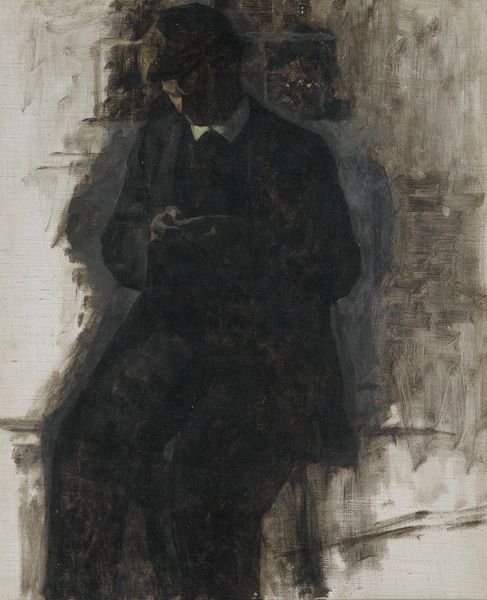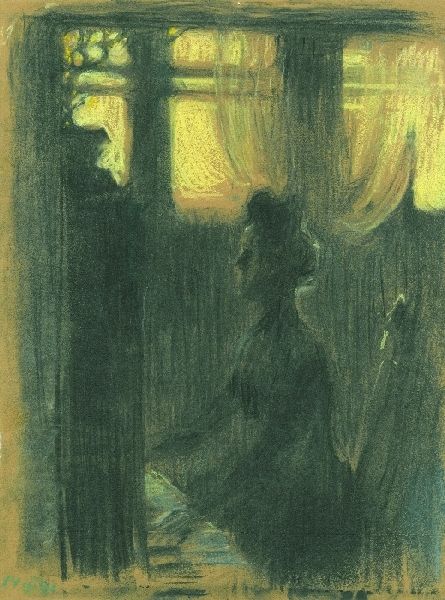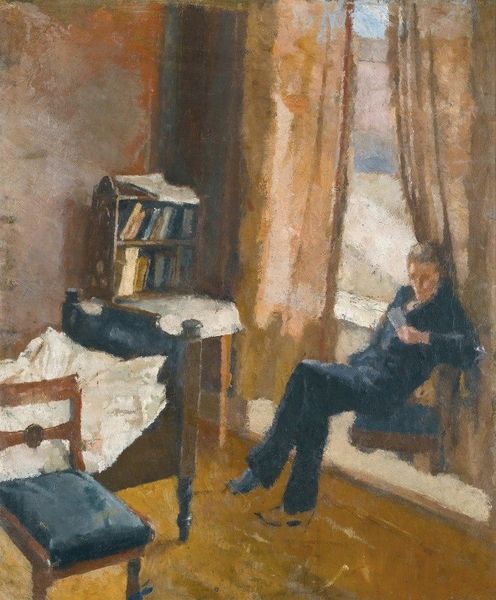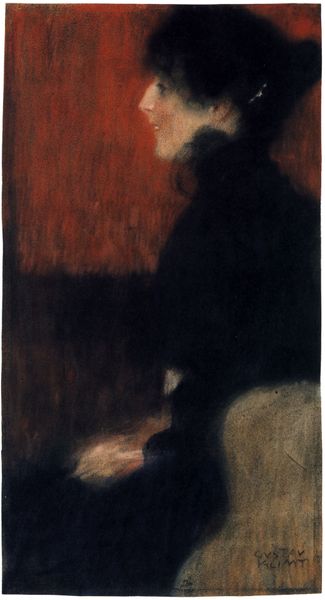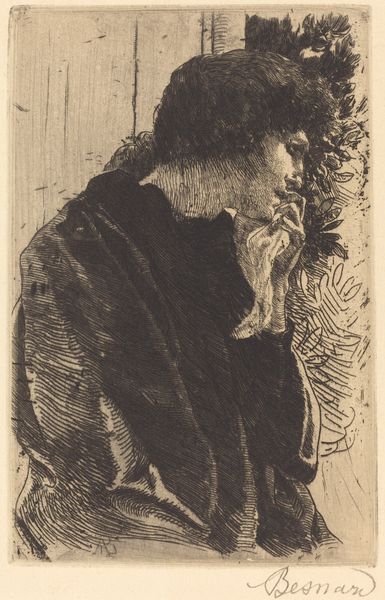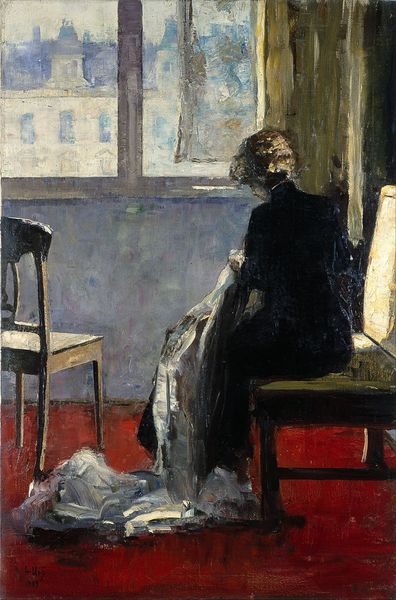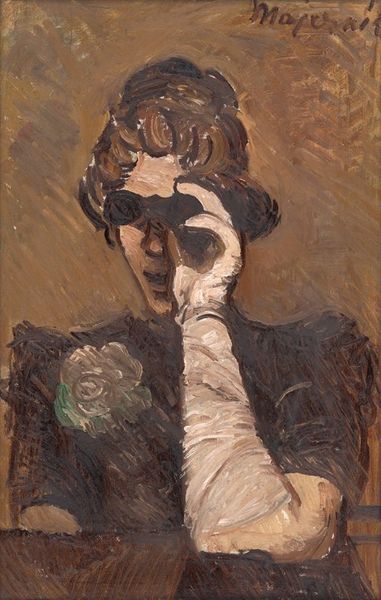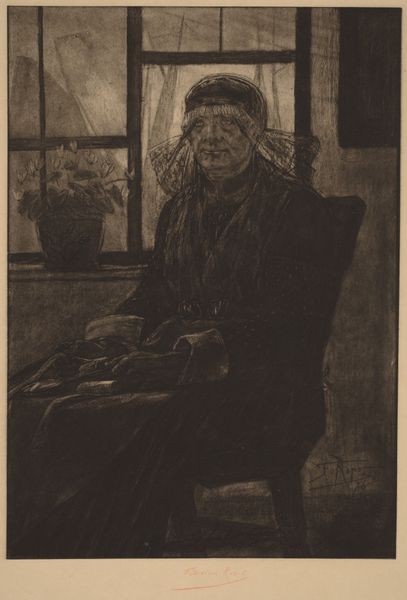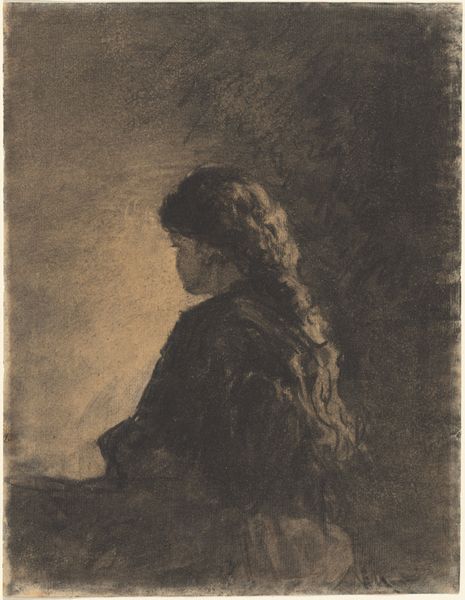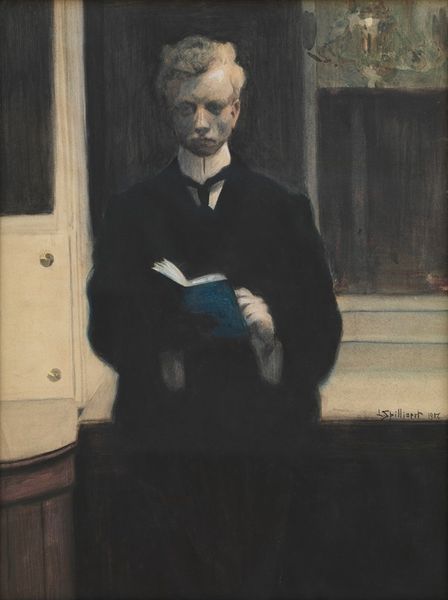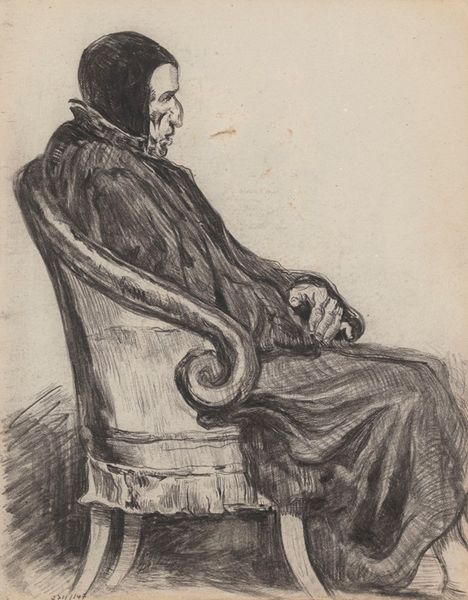
Copyright: Public Domain: Artvee
Editor: So this is Léon Spilliaert’s “Silhouet van de schilder,” made in 1907 with charcoal. I'm immediately struck by how dark and introspective it feels. What do you see in this piece, beyond the obvious silhouette? Curator: I see a portrait of artistic identity, and more precisely, a coded portrayal of interiority. The stark silhouette speaks volumes, not just about the artist's physical presence, but the very act of observing the world, transforming experience into art. Notice the window – isn’t it fascinating how the subtle lace patterns mimic the delicate tracery of a thought? Editor: That's a beautiful comparison! I hadn't considered that the window dressing could have significance beyond being decorative. What might it suggest, symbolically? Curator: It functions as a threshold between the known and unknown. In Spilliaert's era, such details spoke of domesticity, privacy, but also confinement. Is he looking out for inspiration, or trapped within his own gaze? Think of shadows and how, psychologically, they often suggest the unconscious. What part of himself is he capturing? Editor: It makes me think of the internal struggles an artist might face; battling self-doubt, perhaps. It’s almost like he’s in conversation with his shadow self. Curator: Precisely. It resonates, doesn't it? This piece acts as an introspective journey, linking cultural ideas of artists and individuals' inner lives to broader symbolic conventions across history. And to think it all begins with such a simple silhouette... Editor: I see the piece in a totally new way now, thank you! Curator: As do I! The painting reminded us about the artist, a reflection of his cultural background, memory, and our reflection.
Comments
No comments
Be the first to comment and join the conversation on the ultimate creative platform.
